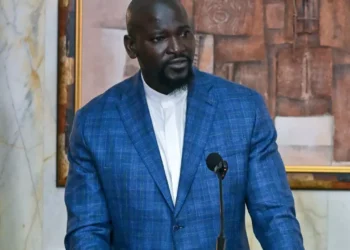The European Commission has confirmed that the EU and US have agreed on much-awaited a joint statement establishing a framework for “fair, balanced and mutually beneficial” transatlantic trade and investment.
The joint statement builds on the political agreement reached by European Commission President, Ursula von der Leyen and President Trump last month.
The commission’s press release noted that the statement “lays out in detail the new US tariff regime towards the EU, with a clear maximum, all-inclusive, tariff rate of 15% for the vast majority of EU exports,” including strategic sectors such as cars, pharmaceuticals, semiconductors and lumber.
It added that sectors which are already subject to Most Favoured Nation (MFN) tariffs of 15% or above, will not be subject to additional tariffs.
It also said that “with regard to cars and car parts, the 15% US tariff ceiling will apply in tandem with the EU initiating the procedures for tariff reductions vis-a-vis US products.”
The text of the joint statement also confirms the EU’s commitment to “procure US liquified natural gas, oil and nuclear energy products” valued at $750bn through 2028, with another $40bn expected to be spent on US AI chips for computing centres.
Von der Leyen welcomed the joint statement, saying that “faced with a challenging situation, we have delivered for our Member States and industry, and restored clarity and coherence to transatlantic trade.”
She also hinted that the EU would continue working to agree “more tariff reductions, to identify more areas of cooperation, and to create more economic growth potential.”
EU Trade Commissioner, Maroš Šefčovič reiterated the point made by von der Leyen in the press statement that the joint statement “this is not the end, it’s the beginning.”
“This framework is the first step, one that can grow over time to cover more sectors, improve market access and strengthen our economic ties even further, this work has been intense and essential.”
Maroš Šefčovič
EU Trade Commissioner Stresses Importance Of EU-US Deal
Also, the EU Trade Commissioner stressed the importance of the arrangement, saying, “This carries considerable weight and is truly impactful at the time when the trade landscape has completely changed.”
He noted that the EU-US transatlantic relationship is one of the largest economic partnerships in the world, and this agreement has a clear common goal, “to put it on solid ground and help drive free industrialization on both sides of the Atlantic, and we want to fully unleash the potential of our combined economic power.”
Similar to his past comments, Šefčovič also said that the alternative to this, however imperfect, deal was much worse.
“The alternative, a trade war with sky high tariffs and political escalation, helps no one.
“It hurts jobs. It hurts growth, and it damages businesses across both the EU and the US. And this is not theoretical as nearly 5 million European jobs, including many in SMEs would be at risk. This deal avoids that path.”
Maroš Šefčovič
Importantly for EU’s carmakers, Šefčovič said that the bloc was pushing to get new 15% tariff applied retroactively back to August 1.
He stated that the EU was looking to present necessary legislative proposal this month.
Šefčovič confirmed among others that the digital sector was kept out of the current trade talks with the US, among others.
However, in a blow to EU winemakers and spirit producers, he admitted that the bloc could not secure a deal in this sector, despite lobbying from Europe’s greatest winemakers in France, Italy, Germany, Spain and Portugal.
“I just would like to add one very important word, and this is: yet. Because our US colleagues, they know that this is our offensive interests, that’s something which is very important for us.
“And therefore I would also refer you to the paragraph which is very important for us, which says that both parties, the United States and the EU, are ready to look at other sectors where we could lower these tariffs in the future.”
M
the joint statement is still technically not legally binding on the parties, but is a “blueprint” or a “road map” that further spells out and advances their political commitments on the EU-US trade, progressing the talks in Turnberry.
READ ALSO: Health Minister Rallies Stakeholders’ Support to Drive Sector Reforms



















